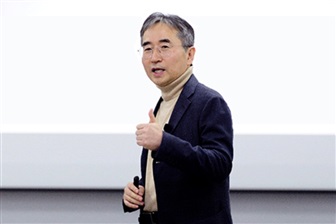Chinese multilayer ceramic capacitor (MLCC) manufacturers—including Guangdong Fenghua Advanced Technology, Chaozhou Three-Circle Group, and Eyang Technology—have rapidly expanded their global market share, reaching an estimated 10% of total revenue in the second half of 2024. That reflects a four-percentage-point gain from 2019 and signals growing competitive pressure on incumbents such as Samsung Electro-Mechanics (Semco), according to Business Post and Futubull.
China traditionally relied on importing IT-grade MLCCs from South Korea, Japan, and Taiwan. But the post-COVID boom in remote work and digital learning triggered surging demand for computers and home appliances, accelerating the expansion of local MLCC production. According to the Korea Trade-Investment Promotion Agency (KOTRA), this trend has driven strategic investment in China's foundational components ecosystem.
A researcher at South Korea's iM Securities observed that as Chinese OEMs increase their influence in IT hardware, they are also strategically cultivating supply chains for essential component materials like MLCCs to support large-scale manufacturing.
Despite their growth, Chinese MLCC firms still lag in technical capabilities and hold a relatively small share compared to global leaders. In the first half of 2024, Samsung Electro-Mechanics captured 24% of the global market, ranking second to Japan's Murata Manufacturing. However, Chinese smartphone brands have reportedly started using domestic MLCC suppliers as leverage in pricing negotiations, further squeezing Samsung's margins.
Roughly 40% of Semco's MLCC revenue is derived from China, highlighting its vulnerability to rising local competition. In response, the company has ramped up efforts to diversify its portfolio, focusing on high-margin segments like automotive electronics and AI servers.
AI server and automotive MLCCs drive growth
Semco's pivot is already yielding results. In 2024, its automotive MLCC division saw double-digit revenue growth. The company also secured a major supply deal worth several hundred billion South Korean won with Chinese EV maker BYD, with shipments already underway. At the March 2025 shareholder meeting, CEO Chang Duckhyun said automotive MLCCs now account for 15% of total MLCC revenue and could surpass 25% by year-end 2025.

Samsung Electro-Mechanics CEO Chang Duckhyun. Credit: Semco
AI servers are also emerging as a key growth driver. These systems require far more MLCCs than traditional servers—about eight times more, according to SK Securities. Some estimates suggest up to 25,000 MLCCs per AI server versus 2,000 in conventional units. This demand is being fueled by AI accelerators, autonomous driving, and the rise of electric vehicles.
According to The Korea Economic Daily, Samsung now holds approximately 40% of the global MLCC market for AI servers, narrowing the gap with Murata's 45%. This near-equal footing contrasts sharply with the broader MLCC market, where Murata leads with over 40% and others—including Semco, TDK Corp., Yageo Group, and Taiyo Yuden—hold between 10% and 20%.
Samsung began repositioning early. In 2022, under Chang Duckhyun, the company launched a new business task force focused on next-gen technologies like silicon capacitors, glass substrates, and solid-state micro batteries. Concurrently, it broadened MLCC supply targets from smartphones to servers, robotics, and automotive applications, anticipating a slowdown in mobile growth.
Beyond AI, Samsung sees robust growth potential in high-voltage automotive MLCCs. Mordor Intelligence projects the global high-voltage MLCC market to expand from US$4 billion in 2024 to US$11 billion by 2029, with a compound annual growth rate of 22%.
At the March shareholder meeting, Chang projected 2024 revenue from AI servers and automotive products to reach KRW2 trillion (US$1.46 billion). Analysts forecast that these segments will grow from 26% of total sales in 2024 to 35% by 2025.
The shift appears to be paying off. While peers face headwinds from global economic pressures and US tariffs, Semco is regaining momentum. Its 2025 operating profit is projected to hit KRW870.3 billion, up 18% year-over-year. By 2026, the company is expected to return to the KRW1 trillion profit club for the first time since 2022.
Article edited by Jack Wu

